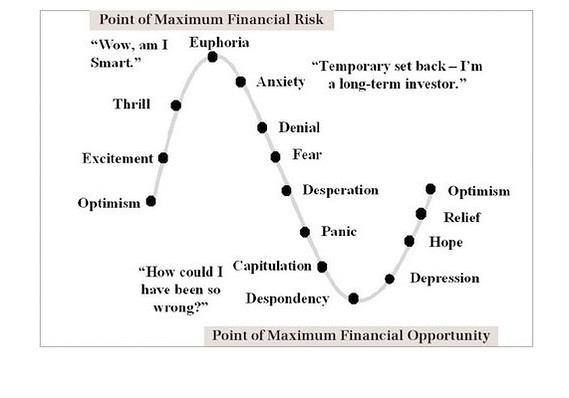Содержание

VANs can offer a range of services which may include message authentication, audit trails and notifications. Walmart Inc. is a popular corporation that has successfully adopted value networks in its systems. The giant company implements both internal and external value networks as a way of finding solutions to the problems encountered in its regular operations.

As the network provider enhances the lines of communication with additional services, a private network is created. These networks offer added value to those using the closed network in the form of fast and secure data exchange (which explains the name value-added network). A value-added network simplifies the communications process by reducing the number of parties with which a company needs to communicate. The VAN accomplishes this by acting as an intermediary between business partners that share standards-based or proprietary data.
Value-added Network (VAN)
With the proliferation of online commerce, businesses are presented with cost-effective supply chain management options. VANs have had to adapt to maintain a place in the ever-growing online business arena; they have done so by focusing on specific industries and expanding their range of services. From humble beginnings, VANs now offer translation, document mapping and a wide range of customized packages to suit any business or industry.

Packet-switched networks, and specifically X.25, were the first VANs. DisclaimerAll content on this website, including dictionary, thesaurus, literature, geography, and other reference data is for informational purposes only. This information should not be considered complete, up to date, and is not intended to be used in place of a visit, consultation, or advice of a legal, medical, or any other professional. Christensen says that new product designers will find it difficult to break into such networks and command a large market share because they are expected to conform to the network model. The designer will need to overcome a lot of resistance from the already existing relationships in the network for their products to be adopted. When it comes to sharing standard based or proprietary data, VANs make it easier for online businesses to share by becoming the one point of contact for them.
What is a VAN (value-added network)?
A value added network helps to simplify the process by securely facilitating communication and the sharing of data between trading partners. Reducing the number of parties a company needs to communicate with frees up time for managers, executives and online business owners to focus on other important details. VANs have become an important part of supply chain management in larger companies, and some businesses, like the finance sector, rely heavily on value-added networking to keep their information secure.
- Ultimately, your company will only benefit if the advantages derived from a VAN outweigh its disadvantages.
- Spot network means a type of electric distribution system that uses two or more inter-tied transformers to supply an electrical network circuit.
- By transmitting data electronically, information moves instantly from point A to point B, providing faster access to operating information.
Since VANs are not connected to the internet, they are a more secure and encrypted environment, so no business secrets are seen by the wrong eyes. Hacking attempts are less frequent and much harder to successfully execute. Similar to the previous model, with this type of VAN one business is connected to multiple others.
Definitions & Translations
On the other hand, the external value network comprises interactions between people who are outside the organization. External networks may include business intermediaries, customers, business partners, stakeholders, open innovation networks, and networks. The participants in the external value network must benefit from the interactions with other people in the network.

value added network definition providers countered by offering additional services, including secure email, encryption, management reporting and Electronic Data Interchange translation between organizations. Historically VANs were set up to enable businesses to automate data entry as well as to send and receive data between trading partners. Since the rise of the internet, VAN providers reinvented themselves and switched to offering services like secure emailing, message encryption, and management reporting. The use of a VAN provides communication channels among supply chain and trading partners by allowing the transmission of data between formats. This transmission is known as an electronic data interchange, or EDI. According to Computerworld, VANs were first used in the 1980s, long before the internet was as pervasive as it is today.
A communications network that provides services beyond normal transmission, such as automatic error detection and correction, protocol conversion and message storing and forwarding. A VAN (value-added network) uses a virtual mailbox to manage incoming Electronic Data Interchange messages, which many systems require to be manually checked and processed by the receiving party. VANs are a more traditional connectivity method for electronic trading than integrated EDI or API connections. Originally introduced in the 1970’s, EDI VAN services are becoming less popular as new connectivity methods such as AS2, AS3, FTP and SFTP are adopted by more businesses. A value network refers to interactions in organizations or departments, where people create plans or sell products and services that benefit the organization. The value network comprises individuals working in the organization, the positions within the organization, or a combination of both.
What Are the Benefits of Using Multiple-Bus Architecture Compared to Single-Bus Architecture?
Entrepreneurs create new businesses, taking on all the risks and rewards of the company. Learn about the challenges facing entrepreneurs and entrepreneurship. Companies seek equity financing from investors to finance short or long-term needs by selling an ownership stake in the form of shares. The main types of value networks include the Clayton Christensen network, the Fjeldstad, and Stabells network, Normann and Ramirez constellations, and Verna Allee’s networks. Vikki Velasquez is a researcher and writer who has managed, coordinated, and directed various community and nonprofit organizations. She has conducted in-depth research on social and economic issues and has also revised and edited educational materials for the Greater Richmond area.
Investopedia does not include all offers available in the marketplace. VANs simplify the communications process by allowing the company to communicate with fewer parties. Normann and Ramirez argued in 1993 that strategy is not a fixed set of activities along a value chain. Successful companies conceive of strategy as systematic social innovation. Neoclassical economics links supply and demand to the individual consumer’s perception of a product’s value rather than the cost of its production. Network means the hotels, inns, conference centers, timeshare properties and other operations that Hilton Worldwide and its subsidiaries own, license, lease, operate or manage now or in the future.
Six Sigma is a business framework that seeks to eliminate wasteful processes and understand the “value” or return-on-investment for all possible goods, services and activities. A Value-Added reseller is an individual or business that adds components or services to an existing product which are intended to improve its benefits to the consumer. The value-added reseller then makes the modified product available as part of package.
A spot network is generally used to supply power to a single customer or a small group of customers. Spot network has the same meaning as the term « spot network » defined in Section 4.1.4 of IEEE Standard 1547. A communications network that had additional functions such as error correction, protocol conversion and message storing. Serving as a collaboration network, EDI VANs help to facilitate EDI communications among business partners. It does so by reducing the number of entities each company needs to connect to.
In business and commerce, value networks are an example of an economic ecosystem. Each member relies on one another to foster growth and increase value. Value network members can consist of external members (e.g., customers) or internal members, such as research and development teams. The popularity of the term has grown in conjunction with business and technology communities’ increased interest in Lean Six Sigma methodology.
A value-added network is a private, hosted service that provides companies with a secure way to send and share data with its counterparties. Value-added networks were a common way to facilitate electronic data interchange between companies. As the internet created competition for this service with the advent of secure email, VANs responded by expanding their service offerings to include things like message encryption, secure email, and management reporting. See Tymshare for an example of a timeshare services company that spun off Tymnet as a data communications specialist with a complex product portfolio. Typically, communication lines are leased out from the local telecommunications company for a network provider.
To differentiate from state services, private organizations recognized a driving need to add communication value. This proved complicated and led to the concept of user-defined networks, which preceded Internet service providers . Often value networks are considered to consist of groups of companies working together to produce and transport a product to the customer.
https://1investing.in/s or services that generate revenue or are expected as part of a service are also included in the tangible value flow of goods, services, and revenue . In civil society organizations these would be formal commitments to provide resources or services. Value-added is the difference between the price of a product or service and the cost of producing it.
